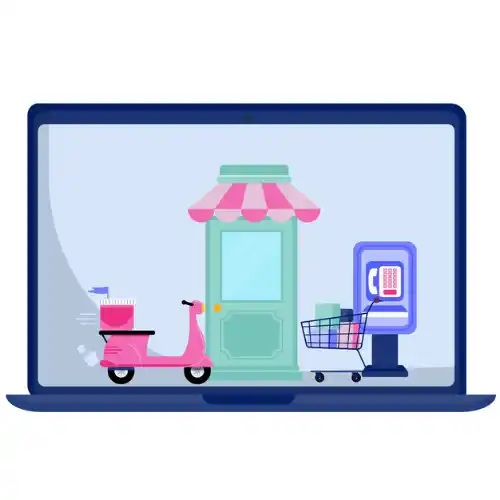A guide to Ecommerce copywriting
E-Commerce in India has risen astronomically in the last decade. Learning to adapt your online brand to your customers through copywriting can be helpful to get good leads and sales. E-Commerce is anything that can be sold through online stores, with a considerable amount of sales coming from online orders rather than brick and mortar.
So how do you make the best of your ECommerce website? Well, the driving force behind most of it is a great copy. Your website needs copy in three distinct categories– Home page, Product page and the Category page. To get started, you need to get some critical insights on your business first:
- Who is your product aimed at?
- What are the product’s core features?
- Where and when would people use it?
- What is your product’s USP/Why it’s better.
This creates a persona around the brand that would attract the kind of customers who would be the most likely to buy your product. Essentially, we find our “ideal customer profile”, and reverse engineer our copy to cater to their language.
Once you have your brand voice down, you can integrate this into your website pages accordingly. If you’re already familiar with copywriting and its fundamentals, you might already know that it’s one of the most integral parts of drawing the right customers in, especially for web pages.
Home Page
Home Pages need to be a culmination of the brand’s pitch to the customer while staying true to their own character. For example, in this Blue Tokai Coffee Website, the first thing we see is a person’s hand reaching for the grinds to make coffee. They also make sure to make you aware of their company objectives, and their beliefs.

Home pages aren’t so much about selling a particular product, but rather the brand and the lifestyle. What makes you different from your competitors brands?
In this case of Blue Tokai, what is different from any other coffee grinds company? The USP is they sell the coffee experience and not the grinds. They focus more on the plantations of coffee itself rather than the grinds. By naming the fields from which the fields came, and showing you how it feels and looks, they’re placing you in the image itself. Now, you would be more prone to buy their coffee.
Category Page
Often overlooked, category pages can be an excellent place to shine your knowledge about your target customers. Not only is good copywriting here good for SEO, but you can also show your visitors that you know what they’re looking for, and you have it.
Let’s take an example of Khadims Shoes. It’s widely known as the go-to brand for quality footwear for the whole family. It is also affordable and provides comfort footwear for senior citizens. If we look at their brands page, we can see how precise the copy is for each category of shoe customers
As you can see, all four points have been addressed in just two banners. A lot of senior citizens prefer shoes with a soft cushioning because of their feet hurting, and Khadims shows that they give this by using “anatomical support”.
The point here is always use your customers’ pain points in your copy. Show them that you understand them, and you have made your product to cater to their specific needs.
Product Pages
Your product page is the most important aspect of the store page. This is where customers get to learn the specifications of the product they are looking to buy. It’s ideally the last page before a person goes to checkout, so you want to give this copy maximum effort to convert leads.
Start by writing a unique selling proposition that your audience will care about. Why is your product better than your competitors? Why would the customer be better off for buying it? Then move on to your products’ features. But the important thing here is to convert your features into benefits. Pitch your product as a story with grounded, emotional motivation. Since emotional buying is the most prevalent in B2C businesses, it would be beneficial to appeal to your customers’ emotional side.
For example, look at this product infographic from the webpage of Rage Coffee.
They first show their accolades to show that they’re doing something right. Then the infographic shows their USP- they care about good coffee aggressively, and show the process of why by saying their 100% arabica. In their copy, they show how they’re different by showing the various exotic ingredients included which is different from general competitors like Bru and Nescafe.
In a nutshell, make sure that you bring out your personality in your products. Don’t go for a boring, objective tone.
Once you peg your voice and character down, there’s some tips, tricks and tools you can use to test how good your copy is.
Tips, Tricks and Tools for a better copy
- Check readability
Your copy needs to be at the level of an 8th grader reading level to perform best. Something too simple will not be taken seriously and too dense will isolate your audience. A copy that is fairly easy to read, that is at a Flesch reading score of 60 and above is best. 60-80 is the golden range, and the higher the better.
- ALWAYS use CTAs:
Except possibly the about page, using CTAs are warranted in every page of your website. Don’t overwhelm your readers with Call to actions, but having at least one every page is beneficial as it leads the customers somewhere. In your product page for example, having a CTA that says “Buy Now!” performs three times better than getting people to buy through an “Add to cart” section on the web page itself.
- Convert Features into Benefits:
Basically, make sure the feature that works for your product is turned into an experience for your consumer. Don’t tell, make them imagine. It’s better to see some good examples of this rule in action before tackling your product.
- Make your product description scannable:
Copywritings’ number one rule is that the readers are not expected to read every line, but lightly skim through the page. So the best way to grab their attention is by making it easy to skim, highlighting a few sentences and important points in a different size or colour.
- Optimise description for SEO

If your customers can’t find your products, then your killer copy is gone to waste. Therefore, it’s important to do your keyword research and involve as many SEO-friendly keywords as possible. This is usually where digital marketing companies shine, because they know the ins and outs of SEO and how to play with it, and can best incorporate your brand voice, marketing strategy and SEO into one good, readable copy and website.
Copywriting for Ecommerce is not harder than copywriting itself. If you got your foundations down, you can excel at web page copy just as you excel at any other copy. The only thing you have to be mindful about is staying true to your brand and making sure it is skimmable. If you mastered the art of those two after doing a valid amount of research, then you can even do email copywriting, and B2B copywriting.






